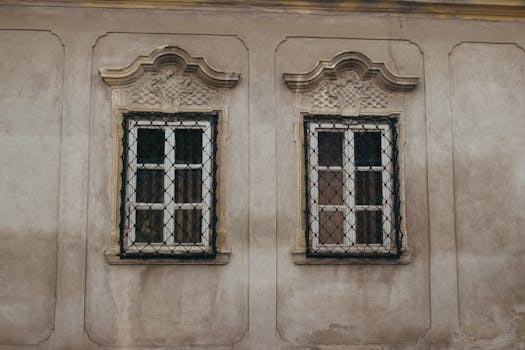
Ram Janmabhoomi Temple's Titanium Grills: A Symbol of Modernity and Security? Nripendra Mishra's Announcement Sparks Debate
The upcoming Ram Janmabhoomi Temple in Ayodhya is set to be a marvel of modern architecture and engineering, and its construction continues to generate significant interest nationwide. Recently, a significant development has emerged concerning the temple's security and design: the announcement that its window grills will be made of titanium. This decision, attributed to prominent architect and advisor Nripendra Mishra, has sparked both excitement and debate among experts and the public alike.
This article delves into the specifics of this decision, exploring the reasons behind the choice of titanium, the potential benefits and drawbacks, and the broader implications for the temple's construction and future. We will also explore the cost implications and the ongoing discussions surrounding the project.
Why Titanium for the Ram Janmabhoomi Temple Grills?
The choice of titanium for the window grills of the Ram Janmabhoomi Temple is a strategic one, reflecting a desire to combine security, durability, and aesthetic appeal. Mr. Mishra, a key figure in the temple's construction, has reportedly emphasized several key factors:
Unmatched Strength and Durability: Titanium boasts exceptional strength-to-weight ratio, significantly surpassing steel and aluminum. This makes it an ideal material to deter vandalism and intrusion, providing a robust security measure for the sacred site. The temple's security is a paramount concern, and the choice of titanium underscores this commitment.
Resistance to Corrosion and Weathering: Ayodhya experiences a wide range of climatic conditions. Titanium's inherent resistance to corrosion ensures the grills will withstand the test of time, maintaining their structural integrity and aesthetic appeal for centuries to come. This long-term durability reduces the need for frequent maintenance and replacement, saving both time and resources.
Lightweight Yet Strong: Titanium's lightweight nature offers logistical advantages during construction and installation. This is particularly important considering the intricate design and scale of the temple.
Aesthetic Appeal: Beyond its functional benefits, titanium offers a unique aesthetic appeal. Its silvery-grey color complements the temple's overall design, while its sleek, modern look stands in contrast to traditional materials.
Cost Implications and Public Reaction:
The use of titanium, a relatively expensive material, is expected to add to the overall cost of the project. While the exact figures remain undisclosed, the public has expressed both support and concerns regarding the financial implications. Some argue that the investment is justified given the temple's historical and religious significance, emphasizing the importance of ensuring its long-term protection and preservation. Others, however, have questioned whether the funds could be allocated more effectively elsewhere.
The discussion mirrors broader debates regarding the financing and allocation of resources in large-scale religious construction projects.
Titanium in Architecture: A Growing Trend?
The Ram Janmabhoomi Temple’s use of titanium isn't entirely unprecedented. Titanium has seen increasing use in modern architecture for its unique properties. However, its application in such a large-scale and historically significant project as the Ram Temple is notable. This decision may potentially inspire similar applications in other monumental structures in the future, showcasing titanium's growing role in the architectural landscape.
Comparing Titanium to Other Materials:
- Steel: While steel is a common and strong material, it is susceptible to rust and requires regular maintenance.
- Aluminum: Aluminum is lightweight and corrosion-resistant, but it lacks the strength of titanium.
- Brass/Bronze: Traditional materials like brass and bronze are aesthetically pleasing but can be more prone to wear and tear over time.
Security Concerns and the Ram Janmabhoomi Temple:
The temple's security is a matter of significant national concern, and this decision highlights the government's commitment to protecting the site from any potential threats. The use of titanium reflects a proactive approach to safeguarding this important religious landmark.
The Future of the Ram Janmabhoomi Temple Project:
The announcement regarding the titanium grills adds another layer to the already complex and highly anticipated construction project. The project's ongoing progress will continue to draw attention and generate discussion, particularly as further details about its design and materials are revealed.
The inclusion of titanium underlines the project's commitment to modernity and security, raising questions about the balance between tradition and innovation in religious architecture. The debates surrounding its cost and the use of such a material will surely continue as the construction progresses towards its completion. This project serves as a case study for the use of advanced materials in large-scale historical projects, and its impact will be felt for generations to come. The use of titanium may also set a precedent for future religious and monumental building projects across the nation. The discussion surrounding the Ram Janmabhoomi Temple and its use of titanium will undoubtedly continue to dominate headlines and online conversations for the foreseeable future.




















